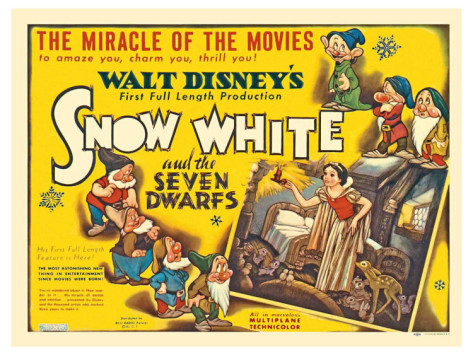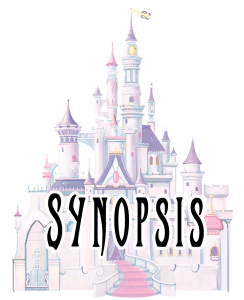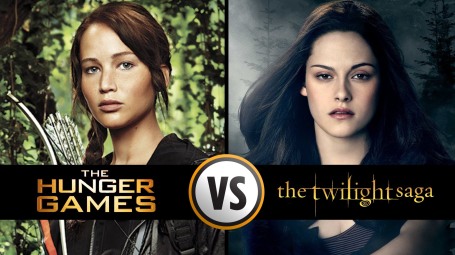
This article is part of the ‘Wicked Wiles’ series examining the positive and negative messages on gender that Disney Princess films impart to their target audience – girls. If you haven’t already, you can check out the introduction here, and search for ‘Wicked Wiles’ at the top of this page to catch up with the series.
Originally published on Fanny Pack, 26/05/2016.

Based on the classic French fairy tale and the 1946 French film, ‘Le Belle at la Bete’, Disney’s ‘Beauty and the Beast’ (1991) is one of the most critically acclaimed and universally loved in the Princess catalogue. The story revolves around the titular ‘Beast’ – a vain and selfish Prince who is transformed into a monstrous animal by an enchantress as punishment for his flaws – and Belle (the ‘Beauty’), a kind and intelligent girl whom he imprisons in the hope that she might help break the spell put on him. Despite his poor anger-management skills (and inability to use cutlery) Belle slowly begins to tame the Beast’s temperament and work her way into his heart. But, before she can return his feelings and make him human again, an angry mob from her village led by the villainous Gaston – desperate for Belle’s hand in marriage – threaten to destroy everything.

Wait, who taught the Beast how to waltz so well? Source: Disney Wikia.
As usual, I’ll be using six key questions to filter the film’s feminist/anti-feminist messages through and ultimately give it a ‘Positive’, ‘Neutral’ or ‘Negative’ stamp on it at the end. So without further ago, let’s see how Disney’s sixth official Princess movie holds up.

- Belle
- Mrs. Potts
- The old beggar woman/enchantress
- The feather duster maid (called ‘Babette’)
- The Wardrobe (called ‘Madame de la Grand Bouche’, which translates to ‘Madame Big Mouth’. Nice.)
- The Triplets (called the ‘Bimbettes’… Hmm.)
Total: 8 principle female characters (with speaking parts) compared to 11 principle male characters (with speaking parts).
In a word, no. And this is a good break with tradition, as nearly every Princess movie so far from ‘Snow White’, to ‘Cinderella’, to ‘Sleeping Beauty’, to ‘The Little Mermaid’ have had female villains motivated solely by vacuous jealousy.
Although the Prince/Beast is the perceived villain to begin with in ‘Beauty and the Beast’, the real villain is Belle’s relentless pursuer, Gaston – clearly the more beastly of the two, personality-wise.

Source: Giphy.

Apart from Mrs. Potts, who acts as a surrogate matriarchal figure to just about everyone, Belle disappointingly has very little interactions with any other female character. All of her close allies – her father, the Beast, Cogsworth and Lumiere – are male, through a combination of circumstance and choice.
This serves subliminally to reinforce Belle’s ‘otherness’ as she seems unable and/or unwilling to maintain relationships with others of her gender. Unfortunately, this is also reflected across the rest of the film’s female characters, with the tightest bonds of friendship being between men: Gaston and LeFou; and Lumiere and Cogsworth.

Pucker up, Cogsy. Source: Tumblr.

For the final two-thirds of the film the answer to this is Belle, with her father, Maurice, keeping things barrelling along through the first act. Yet, even when Belle does become the driving force of the plot, she doesn’t actually attract the majority of the viewer’s emotional investment. That’s because most of this investment is funnelled into the Beast’s quest to regain his humanity instead.

Source: Tumblr.
At the start of the film, Belle flitters around a field belting out a song about “wanting so much more than this provincial life”, yet her unfalteringly charismatic character doesn’t develop one bit throughout the story. Geographically-speaking, she also only ends up living what can’t be more than a few miles away from the home she dreamed of travelling far away from. Meanwhile, the Beast’s character enjoys a dramatically shifting arc that also bears the weight of the entire story’s moral as an added bonus. In this respect, Belle – the eponymous princess of this supposed Princess-orientated movie – is effectively side-lined in her own film.

If toxic masculinity took cartoon form, it would look like Gaston. Whilst Belle is a flawed but emphatically feminist heroine, Gaston is a perfect send-up of laddish, brutish and gross chauvinism. His interactions with her are all deliberately sexist, offensive, vile and stupid – i.e. The perfect counter-balance to Belle’s pragmatism, wit, and intelligence. Gaston’s attraction to Belle is based firstly on her obvious good looks, and secondly because her constant rejection of him turns his failing courtship of her into a game, and as a proud hunter who “uses antlers in all of his decorating”, you know that Gaston basically just sees her as little more than anther deer to chase, shoot, sling over his back and carry home to become another trophy over his fireplace.
During his solo song (sung in that flawless baritone), we’re given a handy checklist of things to have and achieve before any self-respecting ‘man’s man’ can be counted as worthy of the appendage swinging between his legs:
- Body hair. A lot of it.
- Spitting. Be good at it.
- Hunting. Do it often.
- Using animals as decoration. Everywhere.
- Eating 4 dozen raw eggs to become the “size of a barge”.
- Drinking. All the time.
- Chess (although because being smart is basically useless, the only way to win is by slapping the board away from your oppenent.)
- Stomping around in boots. No, really – go out and buy some, now you pussy! (Gaston’s words, remember, not mine.)
With his square jaw, bulging muscles and operatically-deep voice, Gaston is kind of like a Disney prince gone wrong. And Belle, with all her well-developed intellect, seems to be the only person to call this out. Even her father says that he “seems handsome” and suggests Belle should give him a chance in the romance department. The rest of the town – especially his loyal lackey, LeFou, and the horny triplets – treat Gaston like the village hero, never questioning his judgement, and happy to attend an impromptu wedding for he and Belle (before she’s even agreed to it) or sing an ode to his chest hair in the tavern, or later on be led blindly on a witch hunt to kill the Beast he showed them in a “magic mirror”.

None of it. That’s what Belle’s having. Source: Disney Wikia.
The Beast on the other hand, with his anger problems, selfishness and emotional unavailability is someone who starts off in a similar place to Gaston – albeit minus the gushing self-confidence. He doesn’t even call Belle by her name to begin with, just “the girl”. The difference between he and Gaston is that rather than forcing himself upon her, the Beast allows himself to be changed for the better by Belle, thus turning himself into a man worthy of her love. As Gaston becomes more and more incensed and crazed to the point of trying to blackmail Belle into marrying him, the Beast learns to control his anger and becomes more docile and open to the needs of others until he earns rather than wins her affections.

Is it just me or did he look better as the Beast? Source: Disney Wikia.
The ultimate proof of his transformation comes when he allows Belle to leave the castle to attend to her sick father at the expense of him being able to break the spell. (Although, seeing how close the town and castle seem to be, there’s no reason he should have assumed Belle couldn’t have popped back to the castle later on…)

Most of Belle’s characteristics fit the usual wish list for Disney Princesses we’ve encountered so far: beauty, charm, kindness, a good set of pipes, and a touch of wistful longing for ‘something more’ than the life they’re trapped in. But Belle has another trick up her puffy dress sleeves: intellectualism. Like our previous heroine, Ariel, Belle is curious about the world around her. The difference here is that Belle has been able to satiate her curiosity with books, turning her into an imaginative, ambitious, sharp-witted, and worldly heroine.

Having fun isn’t hard when you’ve got a library card! Source: CDN.
As I mentioned previously, the downside to all this glowing perfection is that Belle seems to have done all her character development off-screen, but she also has another severe weakness: Her heightened intelligence has given her one hell of a superiority complex.
At the start she sings about her “little town, full of little people” and is bored by the routine of everyone else’s lives. She laments that no-one reads and imagines more like she does. Similarly, the rest of the town look down on her for being intellectual and “weird”.

Hmm, my ears are burning… Source: LoveLace Media.
During this opening number we see a woman struggling with a comical amount of children – literally juggling babies in her arms – whilst desperately trying to buy some eggs. Meanwhile, Belle sails past on the back of a cart, smiling and singing about the joy of reading – unburdened by the troubles of being a working class mother. This is the best insight we get into Belle’s P.O.V: All sweetness and pleasantries on the outside, but internally judging the other women around her who have slavishly ‘given up’ on any hope of independence or self-empowerment.

“No ma’am, a baby is not acceptable payment for eggs.” Source: Tumblr.
Belle’s quest for self-betterment is both her greatest strength and weakness. She is presented to young girls watching the film as a woman ahead of her time – a model early feminist before the term was even invented who dreams of living life beyond her designated place in society. Yet, by doing so, she can’t help but dole out pity to the other women around her who were not able to choose to live their lives in the way that she has so luckily been able to. In some ways Belle is the epitome of some of the feminist movement’s problems: white, elitist and judgemental. And also kind of a hypocrite – after all, let’s not forget that the only two books we see Belle actually engaged with are romance stories – one (pictured below) she reads a passage from referencing “Prince Charming” and the other is ‘Romeo and Juliet‘. Maybe her desires aren’t quite as wildly different from everyone else’s as she might wish.

“Look, sheep, someday my Prince will come… I-I mean, I’ll be going on my gap year to like, find myself, and stuff.” Source: Lost In Drawers

Yes, I know. How can one of Disney’s foremost feminist heroines be merely a ‘Neutral’ in terms of gender representation? Hear me out.
The core philosophy of ‘Beauty and the Beast’ is to love what’s inside of someone rather than just what’s on the outside. This makes it the first time a Disney Princess film has broken the nonsensical ‘love at first sight’ BS that has been at the heart of every previous story – and this is where most of its plus points come from. Belle saves the Beast – not just physically by breaking the spell, but emotionally and psychologically by changing his behaviour and smoothing his sharp edges. He begins as a self-loathing, literal monster, and ends up as a well-rounded man who literally and figuratively reclaims his humanity thanks to Belle. Belle, meanwhile, is rewarded with the one thing she (secretly) always longed for: someone who truly understands her. Both of them begin as loners and societal misfits, but they end as the perfect fit in each other’s lives.

Source: ImagesMTV
However, this nice, mushy message comes at a cost: Belle’s agency as a character. As I’ve established, when we are introduced to Belle she has no more growing left to do in this film other than learn to be less of a judgemental bitch and find a suitable husband. In fact, I was left feeling a little cheated by the end. The opening, uplifting number makes us anticipate the journey of a modern woman ready to go globe-trotting… only to lead down the same well-trodden path of her finding the nearest castle and Prince to hook up with and stay put in his library for the rest of her life.
In the end, Belle is actually demoted to the usual passive ‘Prince’ role – a one-note hero who swoops in to save the day in the nick of time, leaving the Beast fulfilling the lead, active ‘Princess’ role. This, ultimately, is why what should have been a ‘Positive’ film for gender representation, has sadly balanced out into a ‘Neutral’ one instead.




























